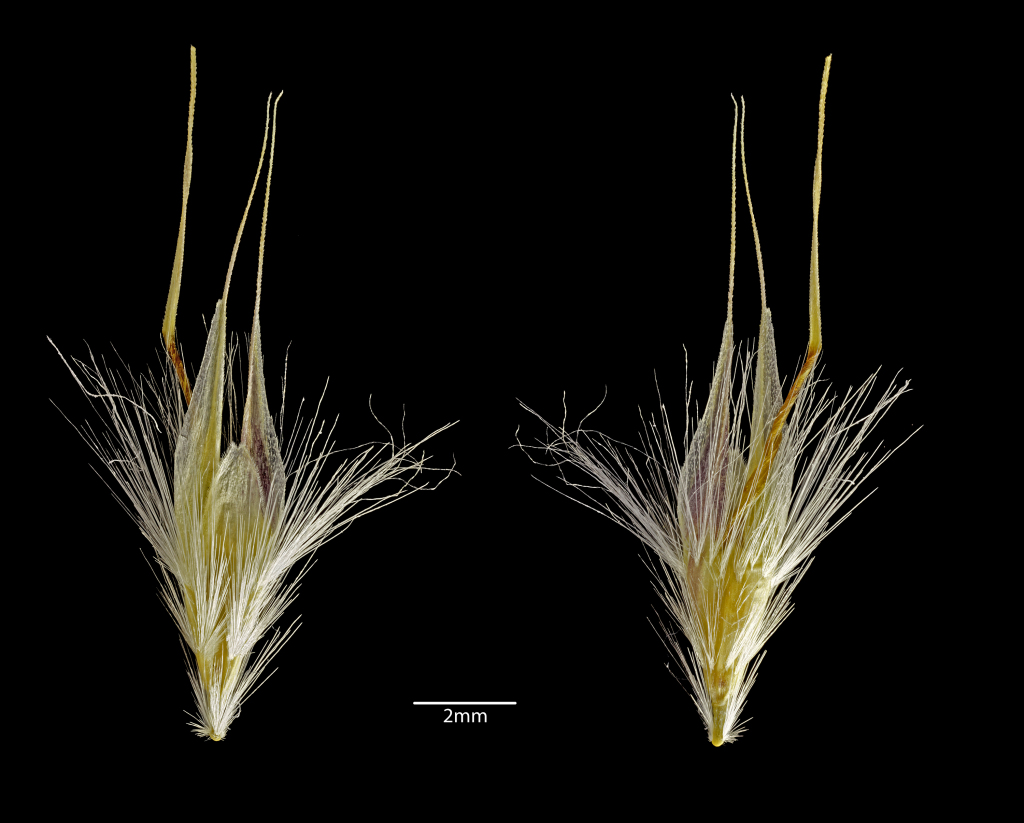Rytidosperma alpicola
(Vickery) Connor & Edgar Crag Wallaby-grassCompact, tufted perennial. Culms to 30 cm high. Leaves smooth, glabrous, very rigid; sheath commonly purplish; blade thick, closely folded to inrolled, almost pungent, to 12 cm long and 4 mm wide. Panicle dense, ovate to ovate-lanceolate, 2–5 cm long. Spikelets strongly purplish initially, mostly 4–6-flowered; glumes subequal, acute, 10–17 mm long; lemma narrow, 2.5–4 mm long, with 2 rows of hairs, the lower just above the callus hair-tuft, sometimes with a few short hairs between the rows; lateral lobes erect, 5–10 mm long, setiform for about half the total; central awn 10–18 mm long; palea narrow-lanceolate, reaching or almost reaching the setiform part of lateral lobes. Flowers Dec.–Feb.
HSF, HNF, MonT, VAlp. Also NSW, ACT. A characteristic species of exposed rock crags and ledges of the higher alps.
Occasional specimens of other Rytidosperma species (notably R. oreophilum and R. caespitosum) occurring in similar exposed sites may resemble R. alpicola in the compact growth habit and stiff foliage and care is needed to correctly identify these plants.
Walsh, N.G. (1994). Poaceae. In: Walsh, N.G.; Entwisle, T.J., Flora of Victoria Vol. 2, Ferns and Allied Plants, Conifers and Monocotyledons, pp. 356–627. Inkata Press, Melbourne.
 Spinning
Spinning
